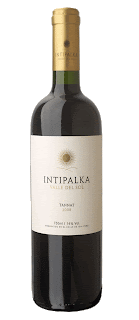Thanks to the Latin side of the family and the Feast of the Son of Isis, Christmas dinner is one heap of turkey, two dollops of gravy and papas, papas, papas. Also, there is wine. Lots of wine.
Two Wines, One Christmas Bonanza
This year, two tempranillos made it out from the cellar and they couldn’t have been more different. On one of them, we’re looking at a 2003 Crianza that tasted like it was past its prime but had enough steel-edges and back-of-the-mouth light fruitiness to deserve seconds. The other’s a new one, 2008 Argentine from Finca La Linda, could be liquid jam. Probably blackberry jam or maybe something kinda Rudolph-y but fruit on fruit goodness like this German layer cake that made its way to the dinner table (missed the photo op so h/t these guys). Really, the wines could have been alpha and gamma, or the Yankees and Mets for how they tasted.
No Fluke – it’s the Atlantic’s fault
Judging by a quick wikisearch, this difference isn’t a fluke. It’s an oceanic divide. Old-world Tempranillo is all about Spain. It’s the foundation of Rioja, the dye in the awesome-looking Batalla de Vino and even the origin of that weird Spanish lisp (ok, not that one but the lisp legend is really cool). New World Tempranillo’s all about finding that magical fruit combo and pumping it up into something sweet enough that even Americans will enjoy. Yes, I’m sure that’s a gross caricature – still, based on my undeniable sample size of 2 wines, it’s true.
In sum
Old World oxidizes Tempranillo, New World jams to it.
Detail Up Wine Nerds
* Finca La Linda Tempranillo 2008 – what Luigi says
* Rioja Ordate Crianza 2003 – ok, this is a bit of a mystery wine. no reviews and no real info on who the producer is. only tidibt involves a small coop in rioja that made wine back in 2003 – radio silence since 2003. mysterious rioja, you intrigue me.
Google Randoms
* Tempranillo gets blended with Garnacha to make Rioja (Mazuelo and Graciano show up too, in a kind of Steve Buscemi way)
* Tempranillo means “little early one” in the lispy language of Spain. It’s not derrogatory though, it’s just a cute way to remind you to harvest on the early side.
* Port has a bit of Tempranillo in it but the Portuguese prefer the grape name of “Tinta Roriz” (if in port) or “Aragonez” (if part of that awesome Alentejo region).
